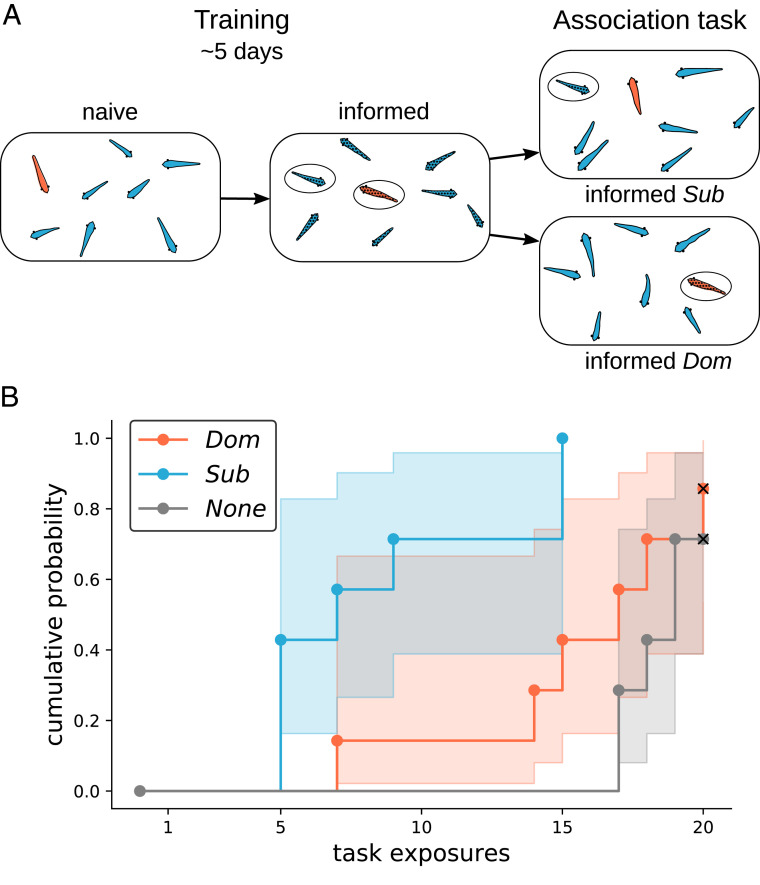Fig. 2.
Association learning paradigm and group consensus responses. (A) Experimental protocol of group consensus association task. Groups of eight individuals (four males, four females; dominant male indicated in this case by orange coloration) that are naïve to the association task are placed into the arena. Over the course of 20 trials in the association task (4 trials per day for 5 d), these naïve individuals become informed about the correct light stimulus. Within the 5-d training period, all groups showed a behavioral shift from a lack of coordinated movement to a consensus movement toward the conditioned stimulus. After 5 d, all initially naïve groups reached consensus movement toward that correct cue, and subsequently, one dominant male (Dom) and one subordinate male (Sub) were placed into new groups (three males, four females; total group size: eight individuals) that were naïve to the association task. Seven groups each with either a dominant or subordinate informant were then placed in identical training protocols as previously, and the time taken to reach group consensus was measured. We then measured the number of trials taken for seven of eight individuals to move toward the correct conditioned stimulus for two subsequent trials (“group consensus”). (B) The cumulative probability (i.e., the inverse Kaplan–Meier probability) of group consensus over the course of 20 trials. Groups that did not complete the task were right censored in the analysis (indicated by x); shaded areas represent 95% CIs. Groups with a subordinate male informant (Sub) had a faster rate of reaching consensus response than those with a dominant male informant (Dom; Cox proportional hazards model, P < 0.01) or those without an informant (None; P < 0.001).

